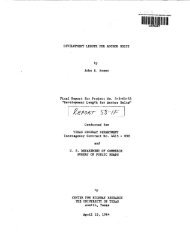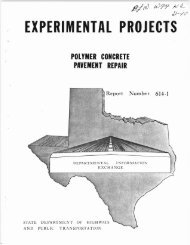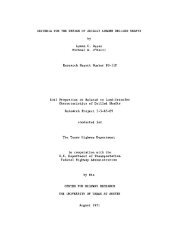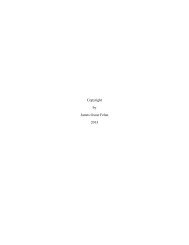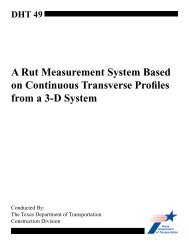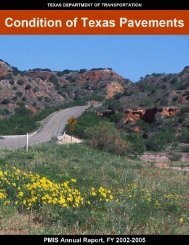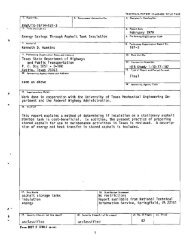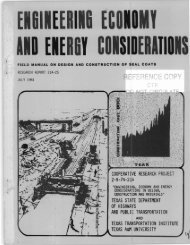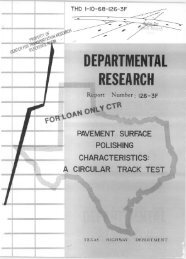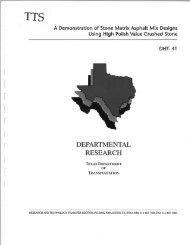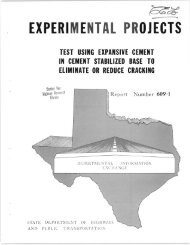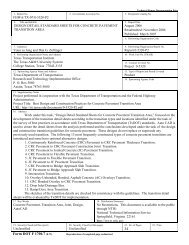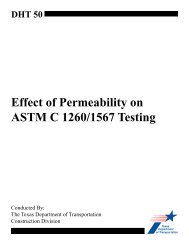Use of Rational and Modified Rational Method for ... - CTR Library
Use of Rational and Modified Rational Method for ... - CTR Library
Use of Rational and Modified Rational Method for ... - CTR Library
You also want an ePaper? Increase the reach of your titles
YUMPU automatically turns print PDFs into web optimized ePapers that Google loves.
annual recurrence intervals). Recurrence intervals <strong>for</strong> most infrastructure design dependent on peak<br />
streamflow criteria are larger. Hence, the rainfall intensities processed by the researchers are likely<br />
to be comparatively small relative to the needs <strong>of</strong> a designer.<br />
2.2. The <strong>Modified</strong> <strong>Rational</strong> <strong>Method</strong><br />
The modified rational method (MRM) is a method to parameterize simple run<strong>of</strong>f hydrographs. The<br />
MRM produces a run<strong>of</strong>f hydrograph (<strong>and</strong> volume) while the original rational method produces<br />
only the peak design discharge. The rational method was originally developed <strong>for</strong> estimating<br />
peak discharge <strong>for</strong> sizing drainage structures, such as storm drains <strong>and</strong> culverts. The MRM,<br />
which has found widespread use in engineering practices since the 1970s, is typically used to size<br />
detention/retention facilities <strong>for</strong> a specified recurrence interval <strong>and</strong> allowable outflow rate.<br />
The MRM was developed (Poertner, 1974) with the intent <strong>of</strong> using the rational method <strong>for</strong> hydraulic<br />
structures involving storage on small watersheds. The term “modified rational method analysis”<br />
refers to “a procedure <strong>for</strong> manipulating the basic rational method techniques to reflect the fact that<br />
storms with durations greater than the normal time <strong>of</strong> concentration <strong>for</strong> a basin will result in a<br />
larger volume <strong>of</strong> run<strong>of</strong>f even though the peak discharge is reduced” (Poertner, 1974, p. 54). Under<br />
this concept, the basic hydrograph is a triangle (Figure 2.1) generated by a rainfall duration D<br />
equal to the time <strong>of</strong> concentration T c , <strong>and</strong> with a base equal to 2T c .<br />
Figure 2.1: The MRM hydrograph when duration <strong>of</strong> rainfall is equal to T c , from Wanielista <strong>and</strong> others<br />
(1997a).<br />
The MRM is based largely on the same assumptions used in the conventional rational method <strong>and</strong><br />
is a conceptual extension <strong>of</strong> the rational method <strong>for</strong> development <strong>of</strong> run<strong>of</strong>f hydrographs (Viessman<br />
<strong>and</strong> Lewis, 2003). For the MRM a stormwater run<strong>of</strong>f hydrograph from a design storm intensity is<br />
approximated as either a triangular or trapezoidal hydrograph (depending on the relation between<br />
storm duration <strong>and</strong> time <strong>of</strong> concentration) with the peak (or plateau) discharge less than or equal<br />
to CiA, where C, i, <strong>and</strong> A have their conventional meaning.<br />
<br />
9



